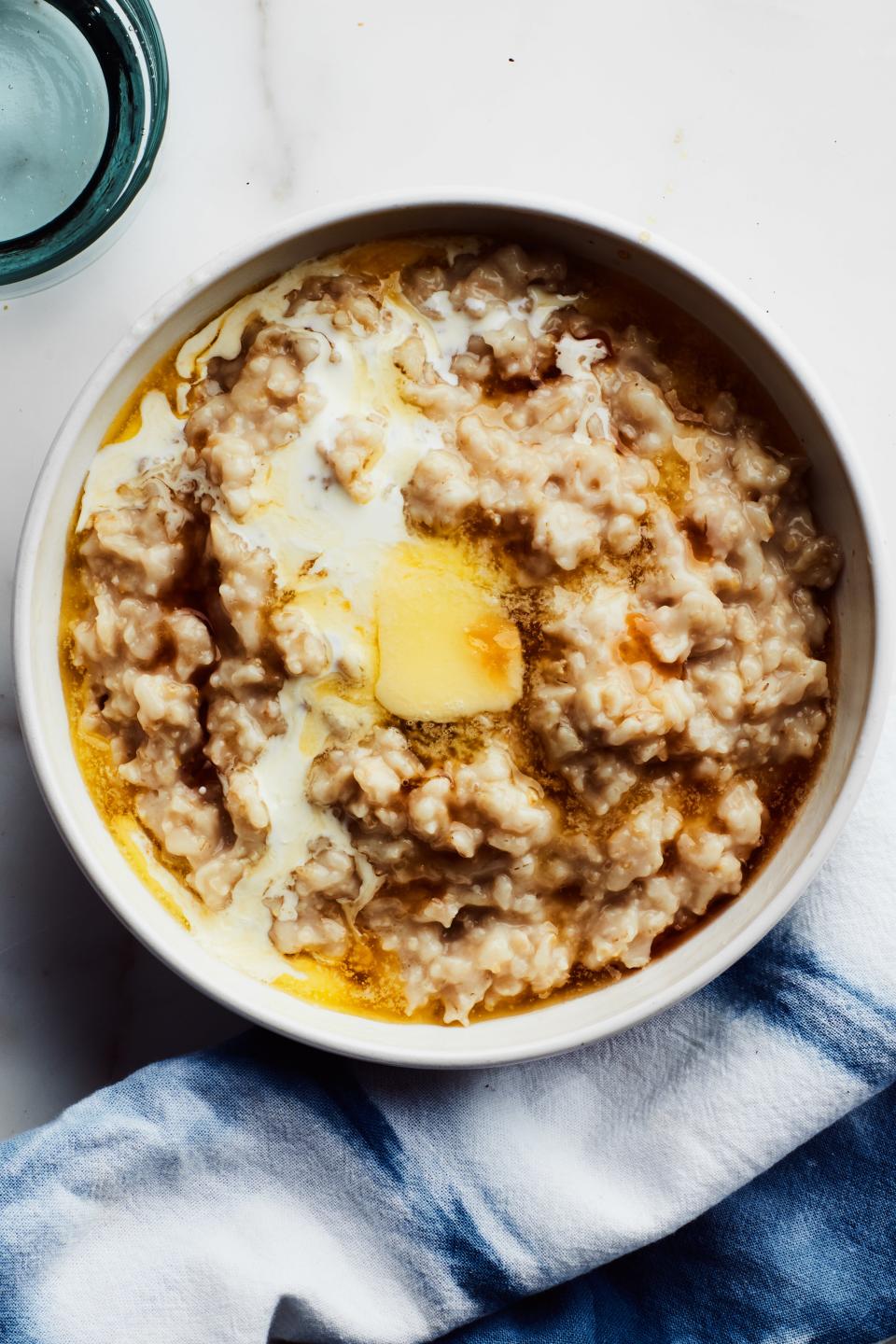What Do You Mean You’re Not Toasting Your Oats?
Trends in the grain world are easy to miss. Unless, that is, you’re a grainhead like baker and cookbook author Roxana Jullapat, who noticed something when she was traveling in Scandinavia last year: Whether they were milled into flour or sprinkled on top of a pastry, many of the grains she encountered were toasted.
This brought her back to her childhood, when family members gave her a lesson about rice. “They said, ‘Make sure you saute the rice in the fat to seal the grain.’ Which sounds like B.S. now that I think about it.”
A roll around a hot pan may not “seal” a grain, but the move is not without merit: A toasted grain is nuttier, warmer on the palate, and, as Jullapat says, more “cerealike.” For all of those reasons, humans have toasted their grains for centuries—which means the “trend” of toasting grains is not really a trend at all (or it’s a very long-lasting one).
Still, I didn’t start toasting the oats for my oatmeal until a few years ago, when oat evangelist and Epi contributor Lukas Volger started his annual 28 Days of Oatmeal tradition. Every February since 2018, Volger has eaten a bowl of oats every morning, all month long. The toppings and flavors change daily, but his base method always remains the same: toast the oats in a little butter, then pour in the milk or water (or both).
Thanks to Volger, that’s how I make my oatmeal now, too. But as simple as this tiny extra step is, in the beginning I sometimes struggled to get it right. Usually, that was because I didn’t toast for long enough. When you stand over a stove first thing in the morning, sleepily stirring dry oats in a hot pan, time moves slowly; what feels like five minutes might actually be just one or two. But depending on the heat you’re toasting over—medium-high works for me—toasting grains does take the full five minutes. You’ll know they’re done not by their appearance (the change in color will not be dramatic), but by their smell: the toasty aroma will waft up to you and be unmistakable. When it does, stop—you don’t want the oats to burn.
Oats can be toasted in a dry pan, but toasting them in a tablespoon of butter—and with a pinch of salt—is more delicious. There’s not much chance that the butter will burn, because the oats soak it up quickly. When my colleague Andrew told me that he toasts his oats in brown butter, I followed suit, getting the butter to the mahogany stage before stirring in the grains. That was so good that I regressed to childhood and immediately texted my mother to tell her what I’d done. “You must do this from now on,” I wrote. “It’s the only way.”

TASTE TEST OATS INSET
My mother, who is just weeks away from 80 and has no more patience for bullshit, texted back: “I have to toast the oats EVERY TIME? Can’t I toast them all at once?”
And in fact, you can do that. Dry oats can be toasted on a sheet pan in a 300- or 350-degree oven for about ten minutes; give them a stir once or twice and look out for that toasty aroma. Cooled and stored in an airtight bag or container, the oats will actually last longer than they would have otherwise. “When you toast your oats, you’re actually preserving them a little,” Jullapat notes. Toasting dries the grains out, removing moisture that could eventually cause the oats to rot.
That drying also changes the texture of the oats, making them a little chewier, though perhaps imperceptibly. Once you turn the oats into porridge, the texture is going to be soft and tender no matter what. That’s the great thing about toasted oatmeal: it’s all the texture of porridge, and all the flavor of granola.
Originally Appeared on Epicurious

